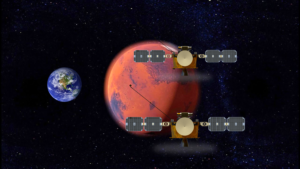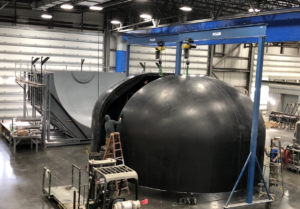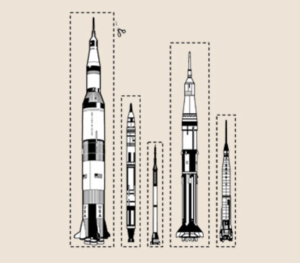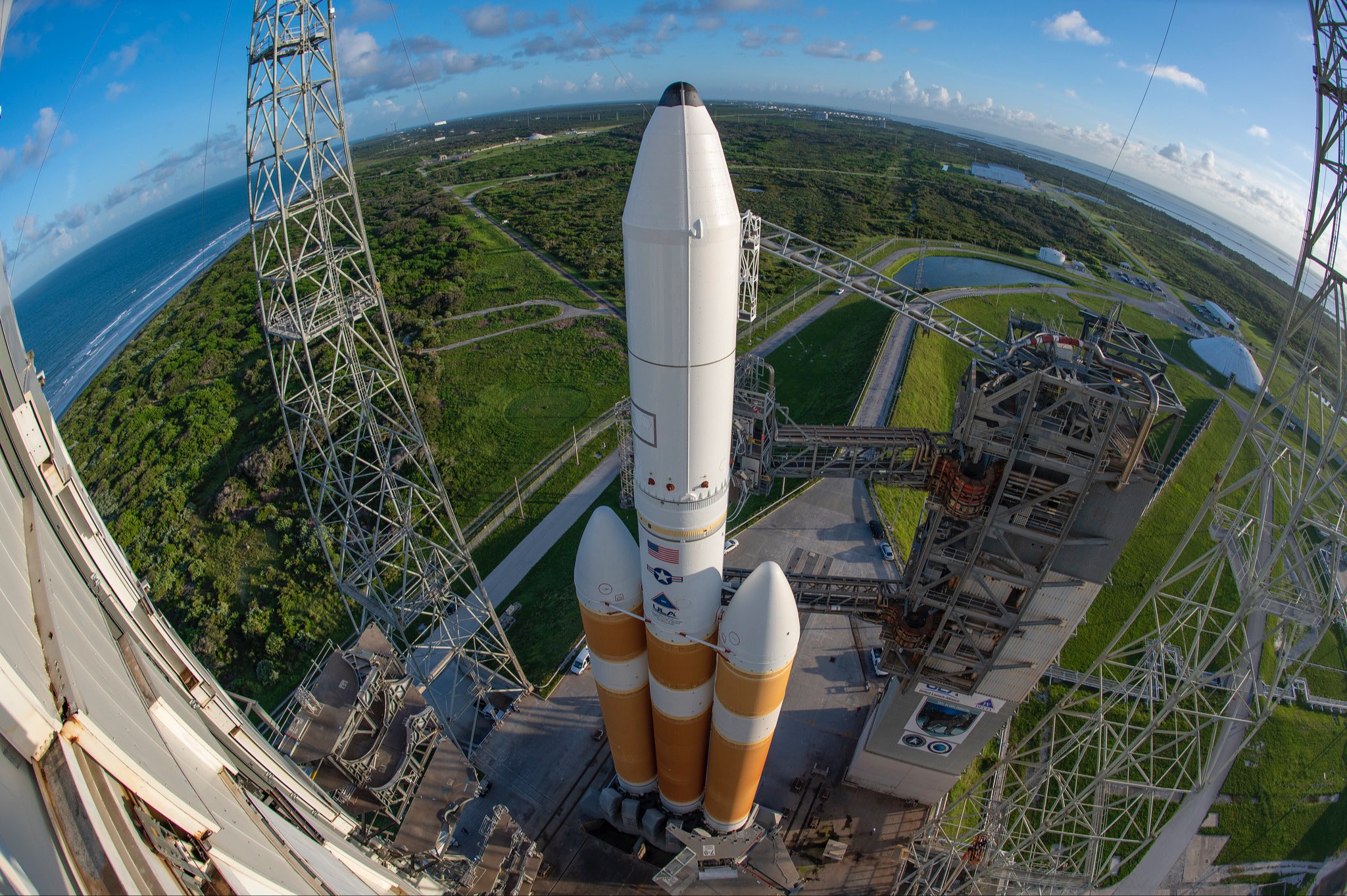
United Launch Alliance’s Delta IV Launch Vehicle
One of the aspects of United Launch Alliance that makes them so successful and appealing to different customers is the company’s consistency. Specifically, ULA has continued to have successful launches right on time over a long period of time. The Delta IV is no exception to this with many different launches under its belt. This rocket has helped ULA provide a large assortment of launch destinations and payloads.
United Launch Alliance’s Delta IV rocket is coming to the end of its journey but has had great success prior. The Delta IV was unique because of its different configurations, propulsion, fairings, and more. All of which combined into a single launch vehicle with different options and capabilities. These features also made it more appealing to companies or agencies looking for a launch vehicle.
While the Delta IV was by no means perfect, it has an incredibly long and impressive history. ULA put a lot of work and time ensuring the rocket was not only very high quality but met their high standards regarding success and the time frame. This ended up paying off and helping ULA along with different variants of the Delta IV launch many missions to different orbits, destinations, and more.
Delta IV Background
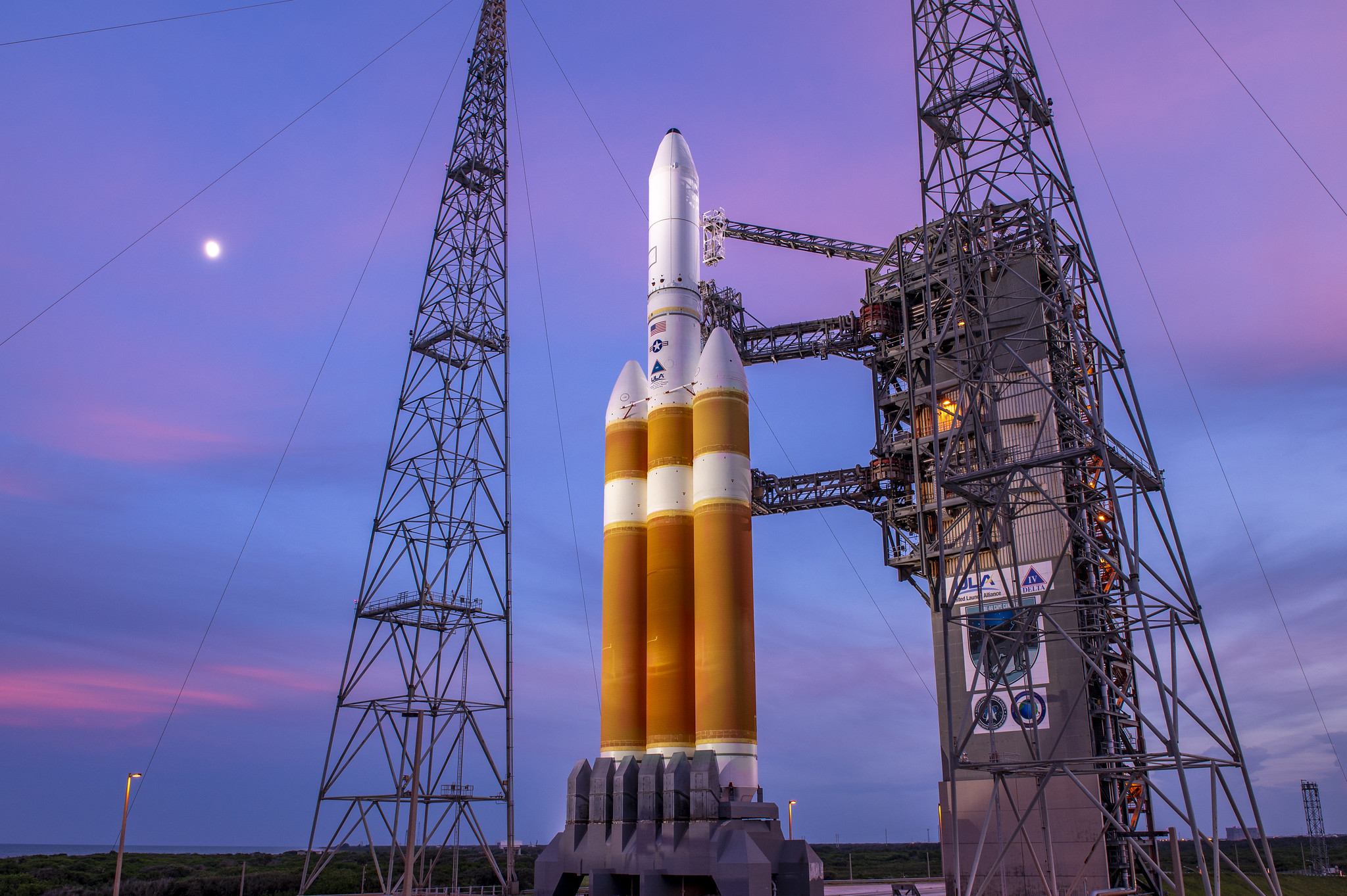
The Delta IV has a long list of different launches and flights over the past two decades. The first flight was in November of 2002. Since then the Delta IV has flown 40 other times for a total of 41 launches to date. Sticking with ULA’s record, the launch vehicle only had a single partial failure out of all 41 launches. The Delta IV is a launch vehicle apart of a bigger Delta rocket family. This family consists of many different rockets over a long period of time. The Delta IV was originally designed by Boeings Defense, Space, and Security division before becoming a product of United Launch Alliance. ULA points out that Delta IV has 15 plus years of 100% mission success founded on nearly 60 years of launch experience.
They have used this success overtime to deliver high-priority U.S. Air Force, National Reconnaissance Office, and NASA payloads to orbit. Additionally, the Delta IV was designed with simplicity in mind helping make the manufacturing process more efficient and streamlined for mission and vehicle integration. Looking back in history the Delta launch vehicle program was initiated in the late 1950s by the National Aeronautics and Space Administration. The Delta vehicle was developed as an interim space launch vehicle using a modified Thor missile as the first stage and Vanguard components as the second and third stages. Over time it evolved and became a commercial rocket that ULA offered to different customers.
Delta IV Features
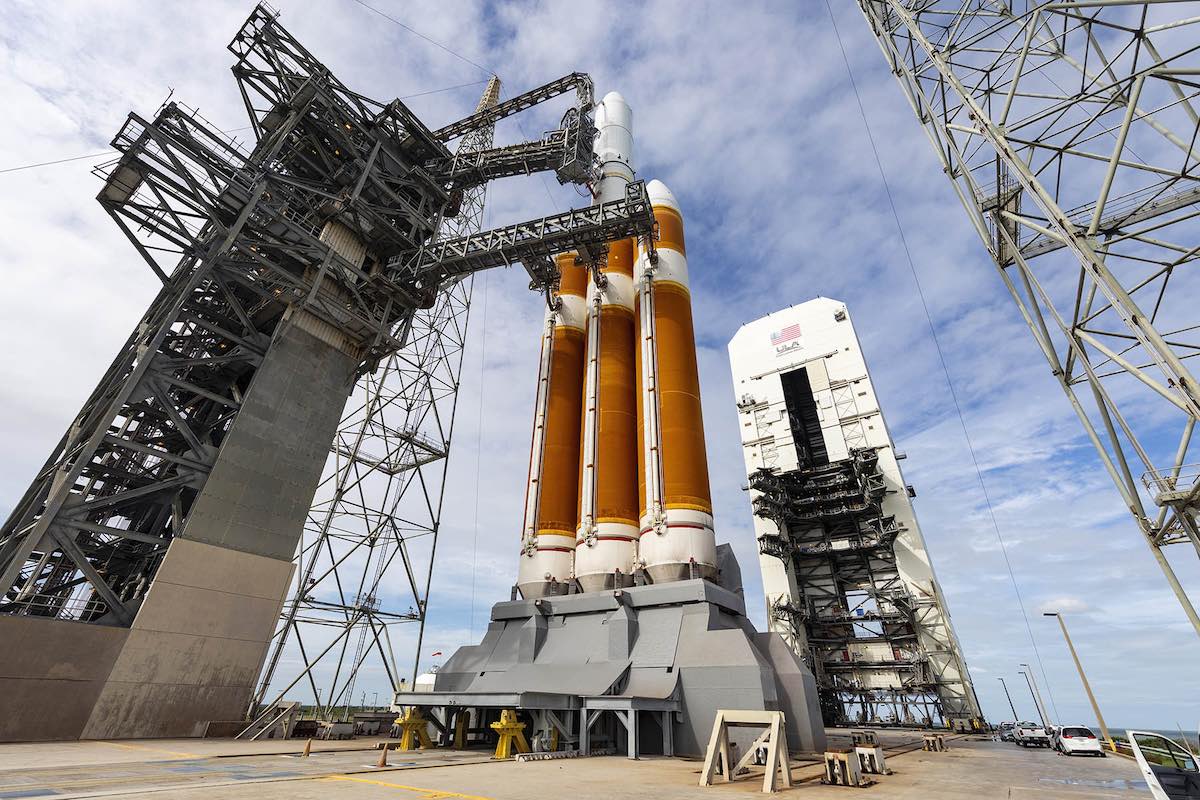
Configurations – The first valuable feature of the Delta IV rocket is the multiple configurations. Space offers practically endless opportunities. Even just looking at our own solar system or Earth, there are plenty of different orbits and destinations. Each has different benefits along with additional challenges of getting there. This is where creating a rocket with multiple launch configurations comes in handy. Without making a new launch vehicle, you can add or remove certain components such as additional boosters or larger fairings. This opens up more opportunities and can reduce the cost depending on the mission at hand.
The Delta IV has three main launch configurations. This includes the Delta IV Medium+, with two or four solid rocket motors (SRMs), and the Delta IV Heavy. All three produce different amounts of power, have different payload capacities and can reach different orbits. When displaying these different variants, you will often see M+(5,2) for example. The M is for medium, the 5 represents the fairing diameter in meters, and the 2 represents the amount of additional solid rocket motors. Taking a closer look at the performance of each configuration, it becomes clear the benefits and different capabilities each one provides. Starting with the first option labeled M+(5,2). It has a payload capacity of 1,840kg to GEO and 11,060kg to LEO. The next configuration has additional SRMs and is labeled M+(5,4). This configuration has a payload capacity to GEO of 2,710kg and 13,730kg to LEO. Finally, you have the heavy variant with a payload capacity to GEO of 6,580kg and 28,370kg to LEO.
Propulsion – The next important feature of the Delta IV launch vehicle is propulsion. Now that we know the different configurations, let’s look at what exactly adds power to each variant. Starting with the main engine on the first stage. This engine is an RS-68A designed and manufactured by Aerojet Rocketdyne. The throttleable RS-68A engine is the largest existing hydrogen-burning engine. It produces 702,000 lbs of thrust at sea level. It weighs almost 15,000 pounds and is 204 inches long. It was developed using a simplified design approach reducing the number of parts and lowering the risk.
The next component is the Solid Rocket Motors or SRMs. For additional thrust at liftoff, the Delta IV Medium+ uses either two or four Orbital ATK solid rocket motors. These SRMs are strapped to the common booster core and jettisoned in-flight for maximum performance. Each weighs 74,500 lbs, burn for 90 seconds, and are 636 inches in length. Lastly, we have the upper stage of the Delta IV. Specifically, the Delta IV uses the RL10 engine to power the second stage. These engines have an extremely long history with many successful firings and launches. Also manufactured by Aerojet Rocketdyne, the RL10 harnesses the power of high-energy liquid hydrogen. An RL10 produces almost 25,000 lbs of thrust and weighs 664 lbs.
Fairings – The last aspect of the Delta IV rocket that improves its capabilities and options is the fairings. The fairings just like any other rocket provide a safe and controlled environment for the cargo prior to reaching space. All ULA PLFs are configured for off-pad payload encapsulation, which enhances payload safety and security and minimizes on-pad time. Similar to the configurable options I mentioned prior, there are multiple fairing options that help facilitate different missions. Delta IV offers a 5-meter-diameter PLF, optimized for the configuration and mission need. Additionally, the Delta IV Medium uses a standard carbon composite bisector design.
The Delta IV Heavy is available with an elongated carbon-composite bisector or metallic trisector PLF. These different sizes and options allow bigger or smaller cargo to fit inside and opens up the options for more customers and satellites. The 5-meter diameter fairings come in two different lengths including 14.3 and 19.1m long. The fairings also feature Interior acoustic blankets, as well as flight-proven contamination-free separation joints, which are incorporated into the fairing design for payload protection. Each aspect works together to ensure whatever cargo is within the fairings survives the violent launch and ascent process.
Conclusion
Launch vehicles come in differnt shapes in sizes but have very similar goals. The Delta IV is an older rocket with a lot of experience through past flights and missions. Over time it along with other launch vehicles has helped make a name for ULA through consistency, and reliability. The Delta IV is a special rocket that has had over 40 missions throughout time. Some of the features that make the Delta IV so unique include multiple configurations, propulsion, and fairings. All of which combined into a single launch vehicle that was capable of many different missions. While the Delta IV has had a great history, it is quite old now. It is likely we will only see a few more launches of the rocket before it retires. This is expected to happen over the next few years. We will have to wait and see what happens with Delta IV and the success of ULA’s future replacement launch vehicles.

